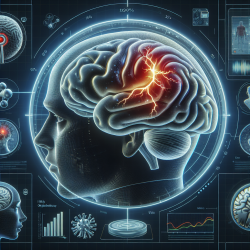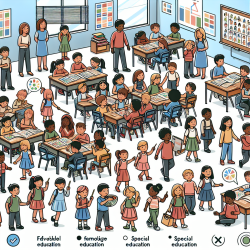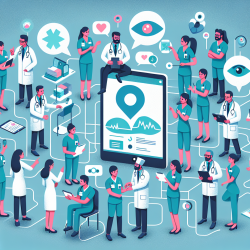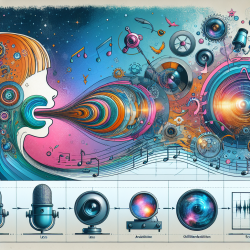As Special Education Directors and practitioners working to support individuals with hearing impairments, it is imperative to stay abreast of the latest research and methodologies that can enhance our therapy practices. A recent comprehensive meta-analysis titled "Threshold Estimation by the Tone-Evoked Auditory Brainstem Response: A Literature Meta-Analysis" provides valuable insights that could revolutionize our approach to auditory therapy.
Understanding Tone-Evoked ABR Threshold Estimation
The Auditory Brainstem Response (ABR) to tone-evoked stimuli is a critical diagnostic tool in assessing hearing sensitivity and auditory nerve function. This meta-analysis, conducted by David R. Stapells, PhD, amalgamates data from 32 studies to evaluate the efficacy of air-conducted tone-evoked ABR in estimating hearing thresholds for both normal hearing individuals and those with sensorineural hearing loss (SNHL).
Key Findings
- Tone-evoked ABR thresholds in individuals with normal hearing typically range from 10 to 20 dB nHL, showcasing the method's accuracy in this population.
- For participants with SNHL, tone-ABR thresholds are generally 5 to 15 dB higher than pure-tone behavioral thresholds in adults, and range from 10 dB lower to 10 dB higher in infants and young children.
- The results demonstrate remarkable consistency across studies, with 95% confidence intervals not exceeding 15 dB, underscoring the reliability of tone-evoked ABR thresholds in guiding the initial fitting of amplification devices in very young infants.
Implications for Practice
The findings from this meta-analysis underscore the utility of tone-evoked ABR threshold estimation in the early identification and intervention of hearing loss. This is particularly relevant in the context of sensorineural hearing loss, where accurate threshold estimation is crucial for the effective fitting of hearing aids and other amplification devices.
Enhancing Early Intervention Strategies
Early identification and intervention for congenital hearing loss are paramount. The research supports the recommendation of using tone-evoked ABR thresholds to guide the initial fitting of amplification devices in infants. This approach can significantly improve the developmental outcomes for children with hearing impairments by ensuring that intervention strategies are informed by accurate and reliable diagnostic data.
Advancing Auditory Therapy Practices
For practitioners, the integration of tone-evoked ABR threshold estimation into auditory therapy practices offers a more nuanced understanding of an individual's hearing capabilities. This knowledge enables therapists to tailor intervention strategies more effectively, ensuring that they meet the specific needs of each individual. Moreover, the consistency and reliability of the results provide a solid foundation upon which to base therapeutic decisions.
Encouraging Further Research and Application
While the meta-analysis provides compelling evidence for the efficacy of tone-evoked ABR threshold estimation, it also highlights the need for ongoing research. Further studies are needed to explore the application of these findings in diverse populations and to investigate the long-term outcomes of interventions based on tone-evoked ABR thresholds. Additionally, there is a need for increased awareness and training among clinicians to ensure that this valuable diagnostic tool is utilized to its full potential.
Conclusion
The "Threshold Estimation by the Tone-Evoked Auditory Brainstem Response: A Literature Meta-Analysis" offers critical insights that can significantly enhance auditory therapy practices. By incorporating these findings into our diagnostic and intervention strategies, we can improve the accuracy of hearing loss identification and the effectiveness of subsequent interventions. As we strive to support individuals with hearing impairments, it is essential that we continue to embrace evidence-based practices that can facilitate better outcomes for those we serve.
To read the original research paper, please follow this link: Threshold Estimation by the Tone-Evoked Auditory Brainstem Response: A Literature Meta-Analysis.










